Renault eWays: 100% electric Megane & Dacia Spring
In a virtual event today, Groupe Renault presented two all-electric models. One for Renault sits on their dedicated CMF-EV platform expected in 2021, only now, it looks like the first model will not be an SUV.
+ + Kindly see our update below + +
Previous announcements of the CMF-EV architecture envisioned the Morphoz SUV to open the European market. Today, though, Groupe CEO Luca de Meo announced, the new electric Renault to be a 95%-close to series outlook and hatchback.
The Dacia Spring presented at the same event in Paris, is already serial and based on the China model Renault City K-ZE. Now coming to Europe, Dacia CEO Denis Le Vot, positioned it as “the most affordable car in Europe”. As before, we yet wait for Dacia to name an actual price. Furthermore, Dacia added that the vehicle will not be available in the UK and only be sold in mainland Europe.
At the same time, Le Vot said, Dacia would roll-out the Spring as a car-sharing model first and pointed to the Renault Zity service now having 380,000 users and 1,200 EVs. Dacia wants to add to the fleet from early 2021. This service orientation may point to the company not yet being ready to go into the truly low price EV segment in Europe. Not so with mother-company Renault. Group CEO Luca de Meo at the event screening from Paris, said the new model he was about to present, would be “the cutest and most affordable EV in Europe”. As with the Dacia EV, the price remained undisclosed.
On the model’s back or lower belly rather, the company introduces the CMF-EV platform that here takes the form of a C-segment hatchback, that Renault had first “invented with the ‘seize’ (Renault 16) and now reinvented,” according to De Meo.
The Megane – an obvious reference to the 1995 Mégane series, which Renault says was the third-best-selling series they ever launched with seven million units sold – the electric car the company showed today is “95% of what the production car will look like and our plants, here in France will start producing them next year,” de Meo said.
The CEO also had some technical data ready before an in-depth product briefing tomorrow morning. The Renault Megane (think a “Golden E at the end”) features what he calls “the flattest battery in the market” at 11 centimetres high. The flat powerpack holds 60 kWh for a range of 450 km. The fastest charging adds a range of 200 km in half an hour.
Besides, Renault wanted to “break the rules,” said the CEO and designed a car that is 4.29 long and somewhat shorter than a traditional hatchback (e.g. seven centimetres shorter than a VW Golf 8) but similarly roomy inside, in short, “a masterpiece of packaging,” according to Luca de Meo. A band of lights that spans the entire breadth of the front will also make “future Renault’s recognisable from a 100 metres,” he added.
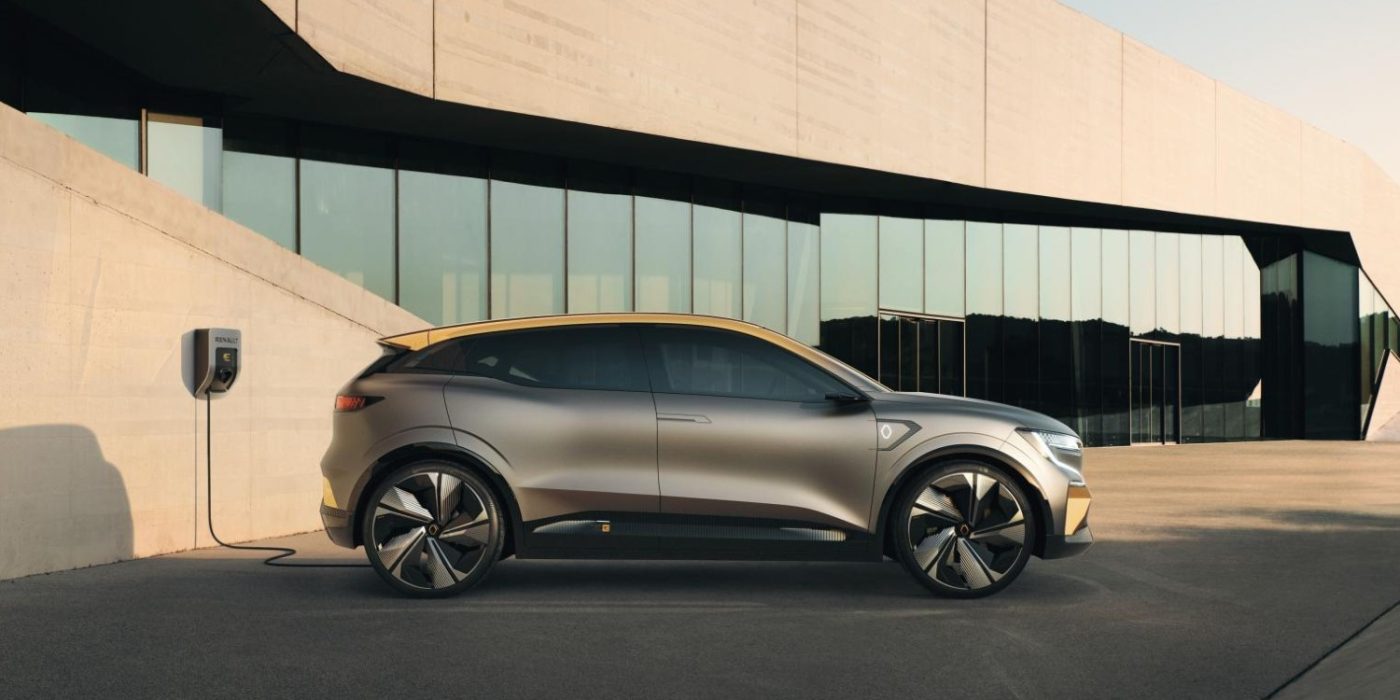
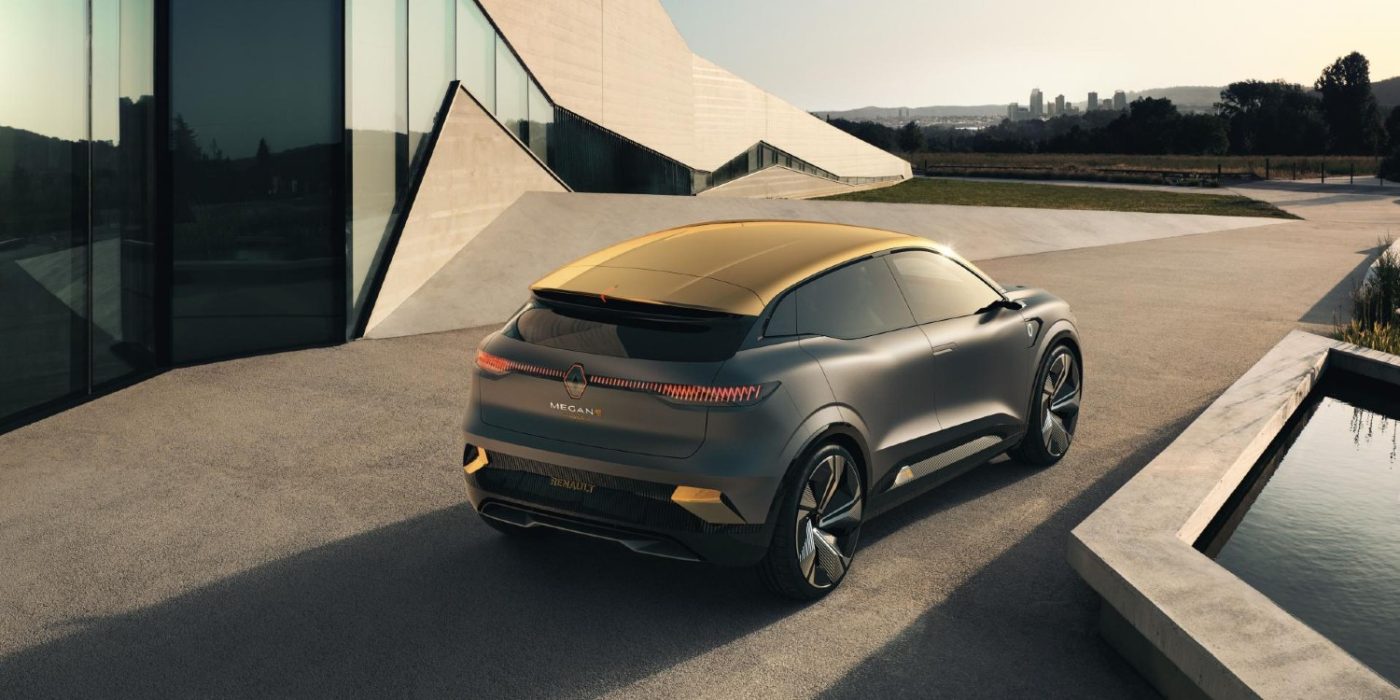
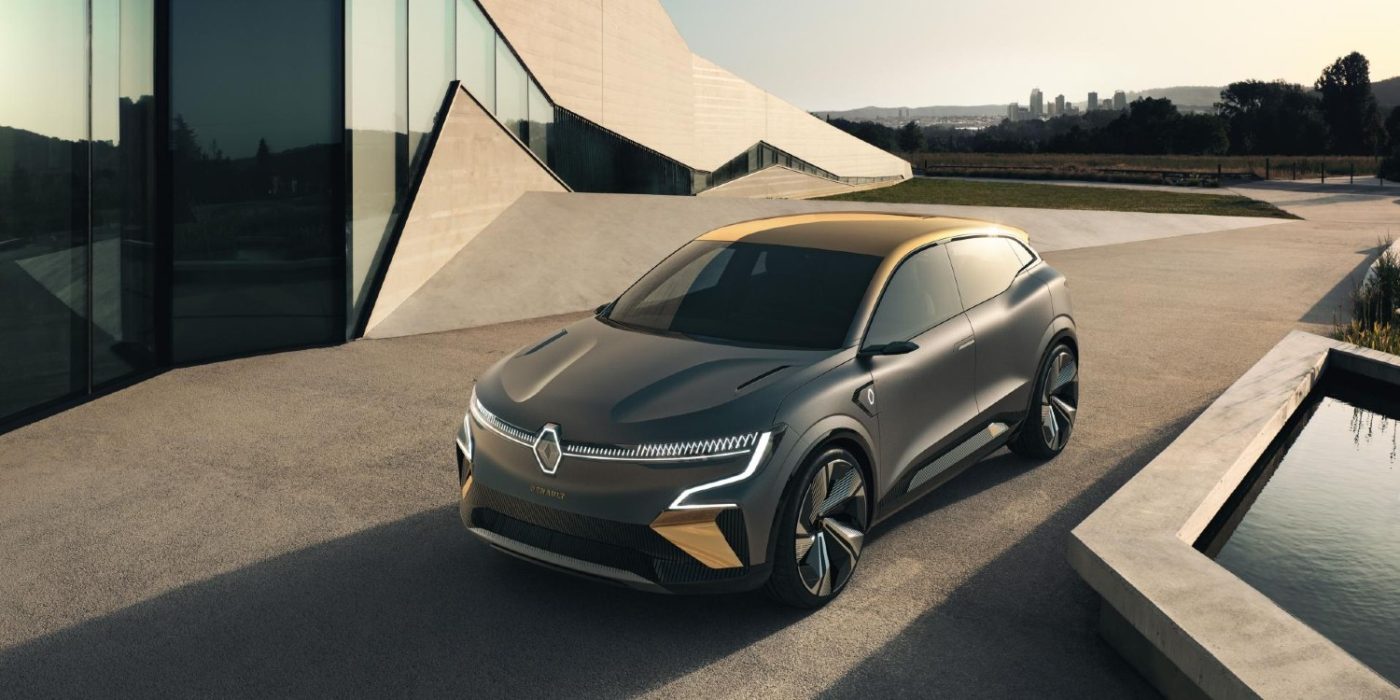
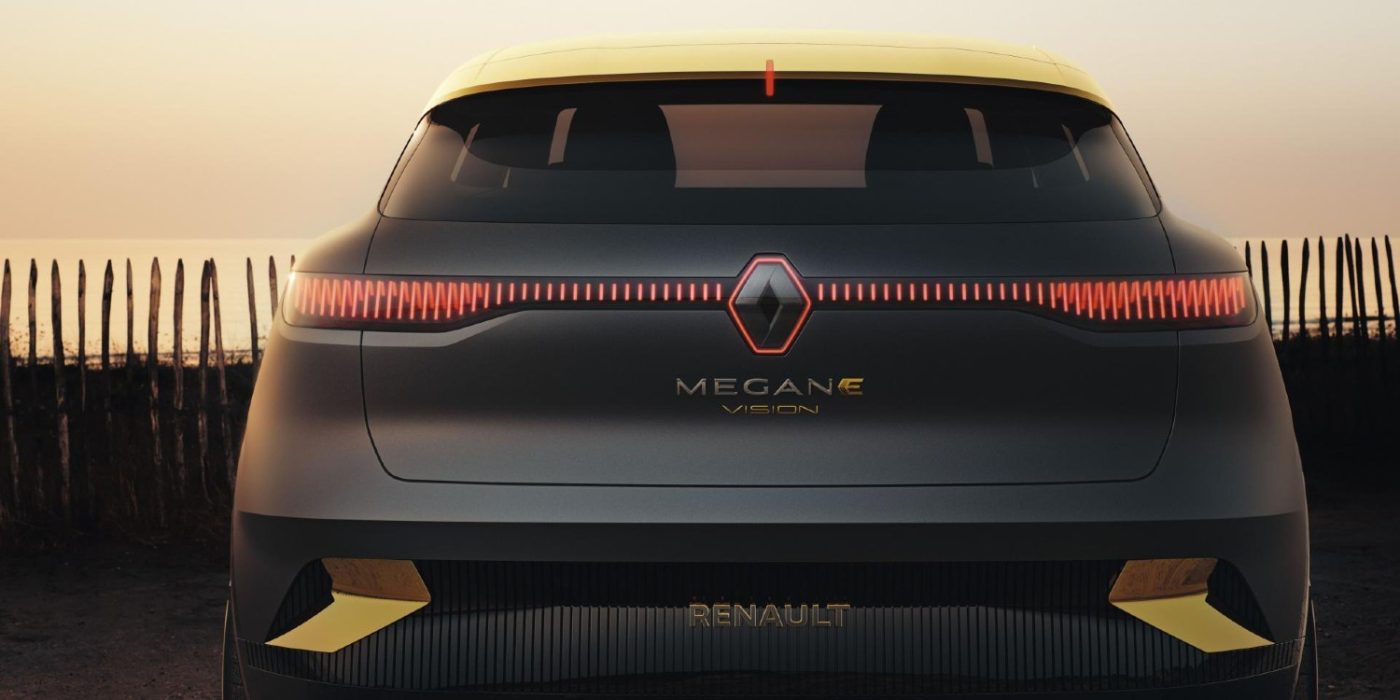
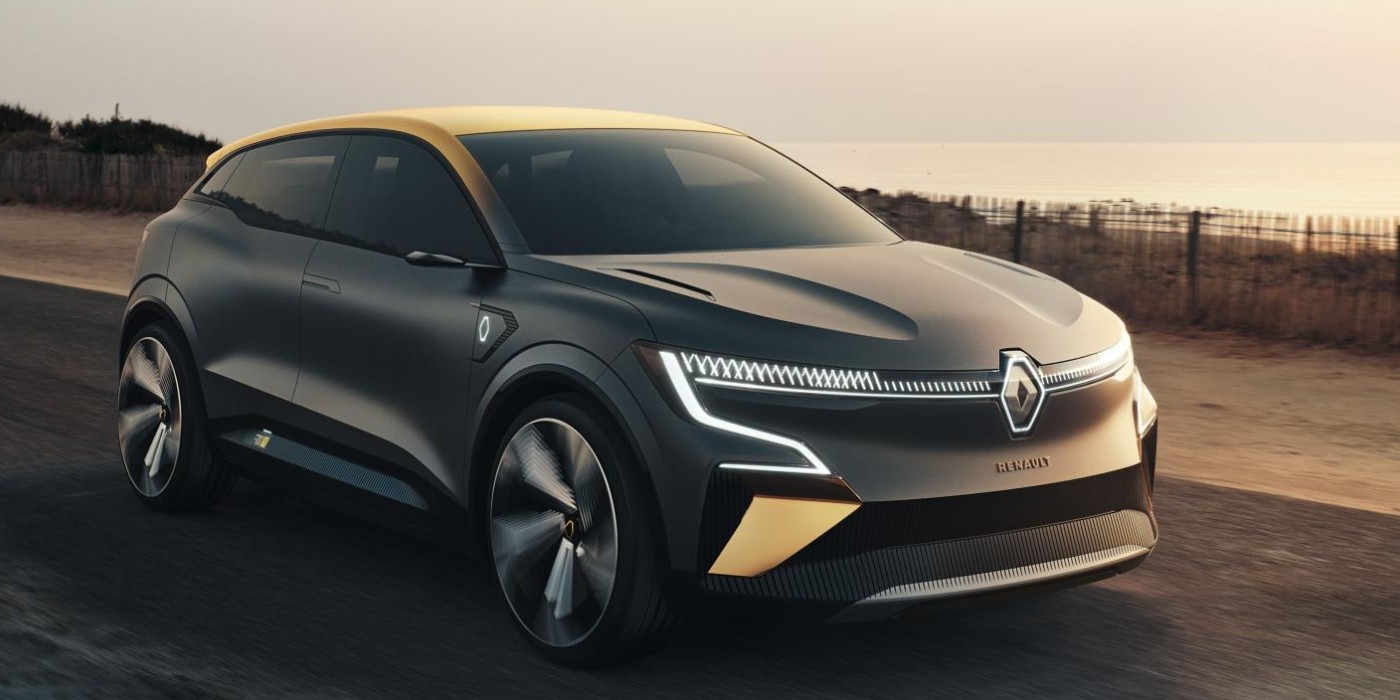
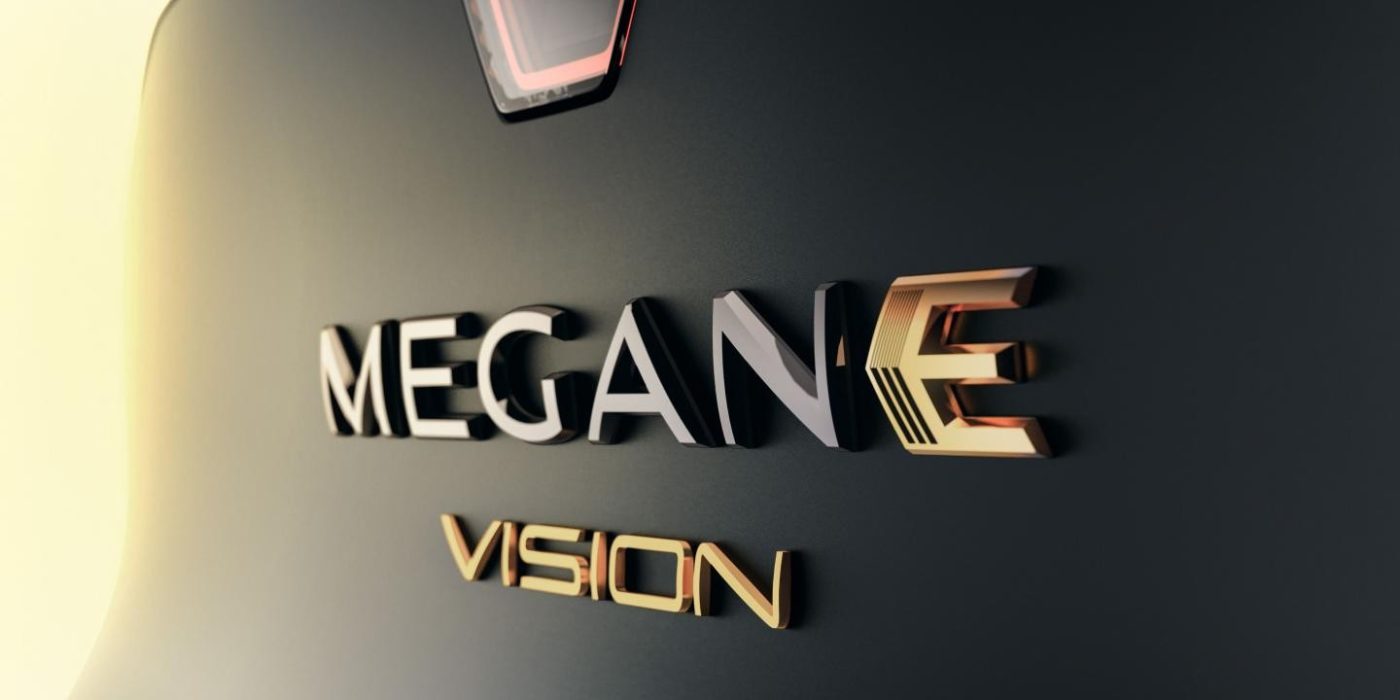
As Group CEO, he also delivered some now almost historical data in the younger industry which Renault had entered comparably early on. The company has eight different electric vehicles on offer at present, ranging from the tiny Twizy to the ZE Master van.
In sales, these translated to 350,000 units on the streets today. The Zoe remains the best-selling model, making for almost a third of all Renault EV sales (110,000 units) and Europe’s most favoured electric car. It appears Renault hit a sweet spot in price and size since the introduction in 2013.
Now, with the new hatchback, the company is looking to do the same. They estimate that a hundred million people in Europe drive such a family-size car, just not yet electric. Plus, “In five years, 50 per cent of all vehicles sold will be electric or a hybrid,” said de Meo. “That’s why we need this wide range,” and also to enter the volume segment.
That brings us back to Dacia. Apart from car-sharing, that is to come available in 2021, the Romanian brand of Groupe Renault has also thought of another commercial use. The Dacia Cargo version, again all-electric, boast an 800-litre trunk and 325-kilo cargo capacity. Expect more technical data to come on Friday.
References made to the Dacia Logan and Duster series, both hailed as saviours in difficult times, did overlook the actual roots in China. The Dacia Spring is essentially a modification of the Renault City K-ZE that is out in China at competitive prices.
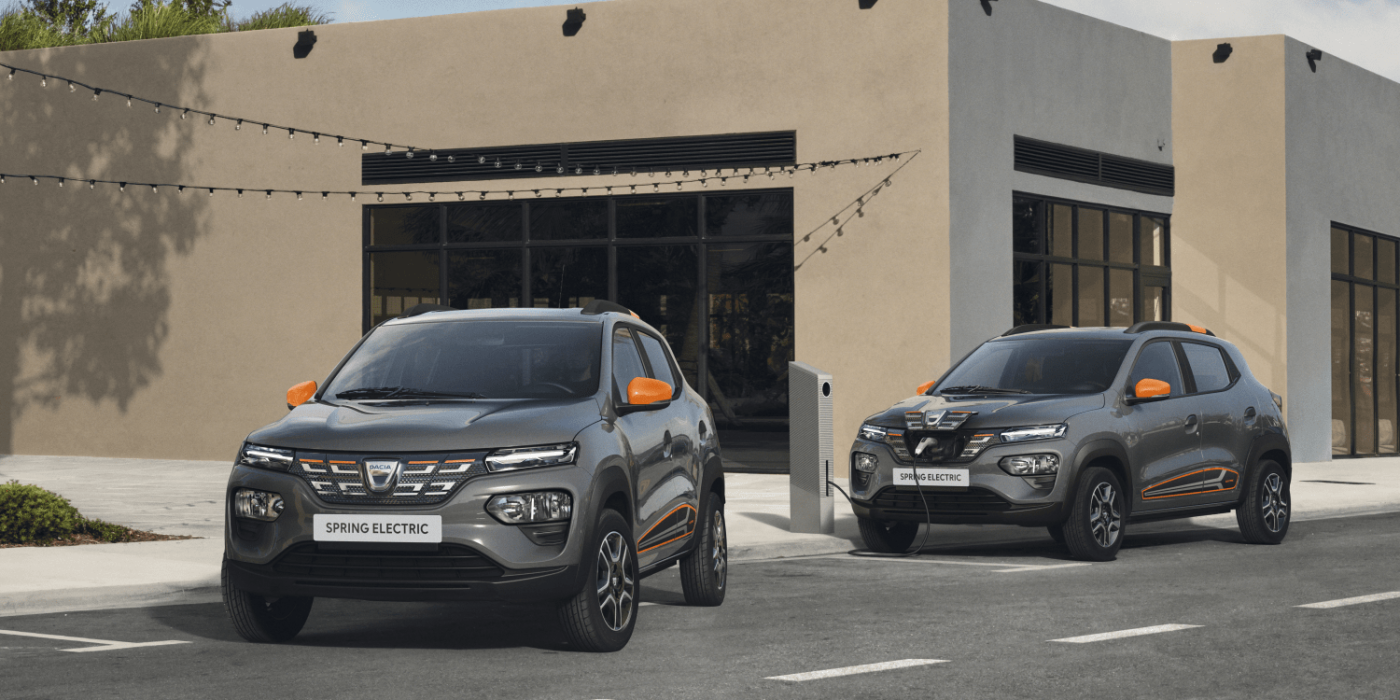
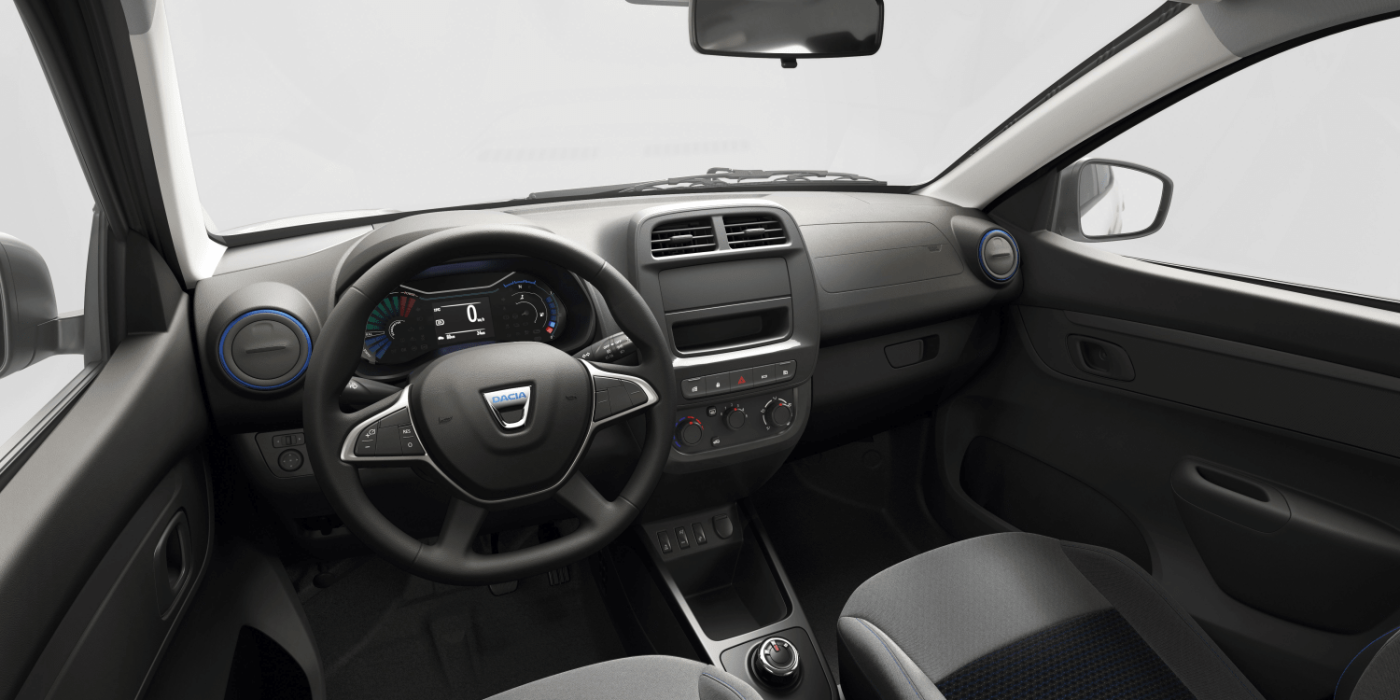
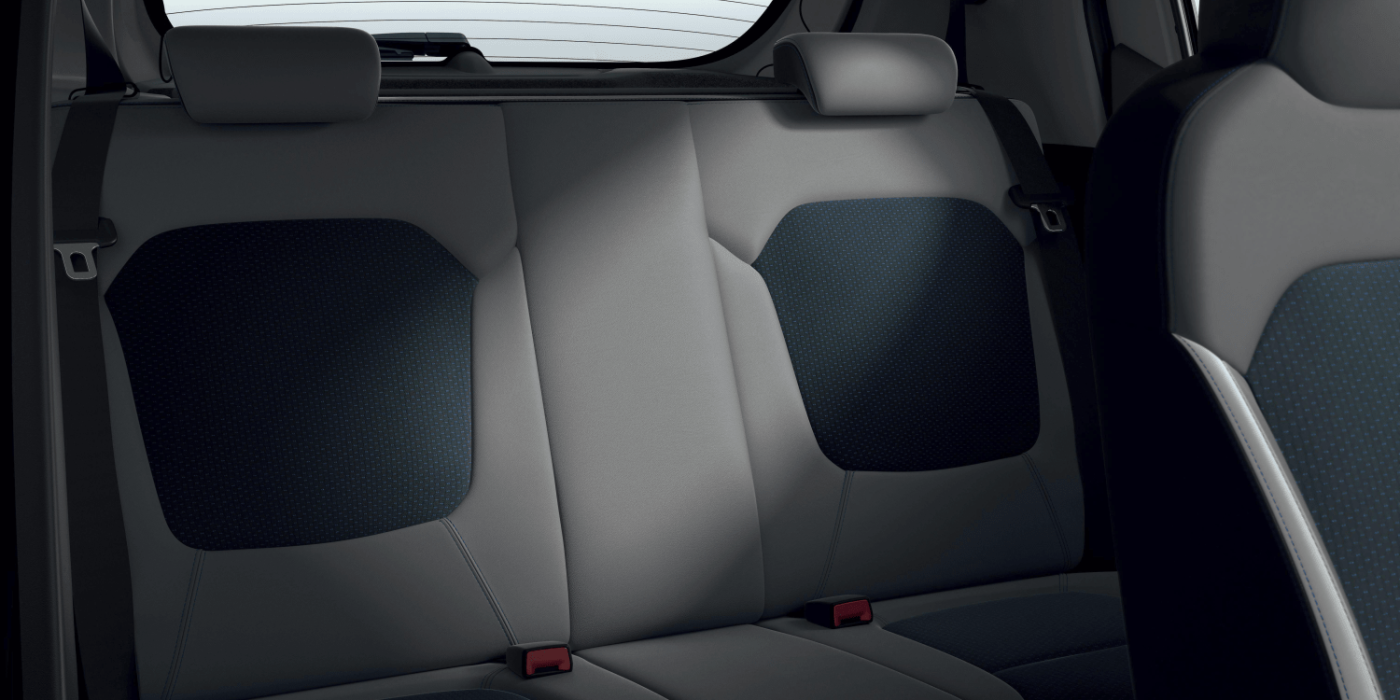
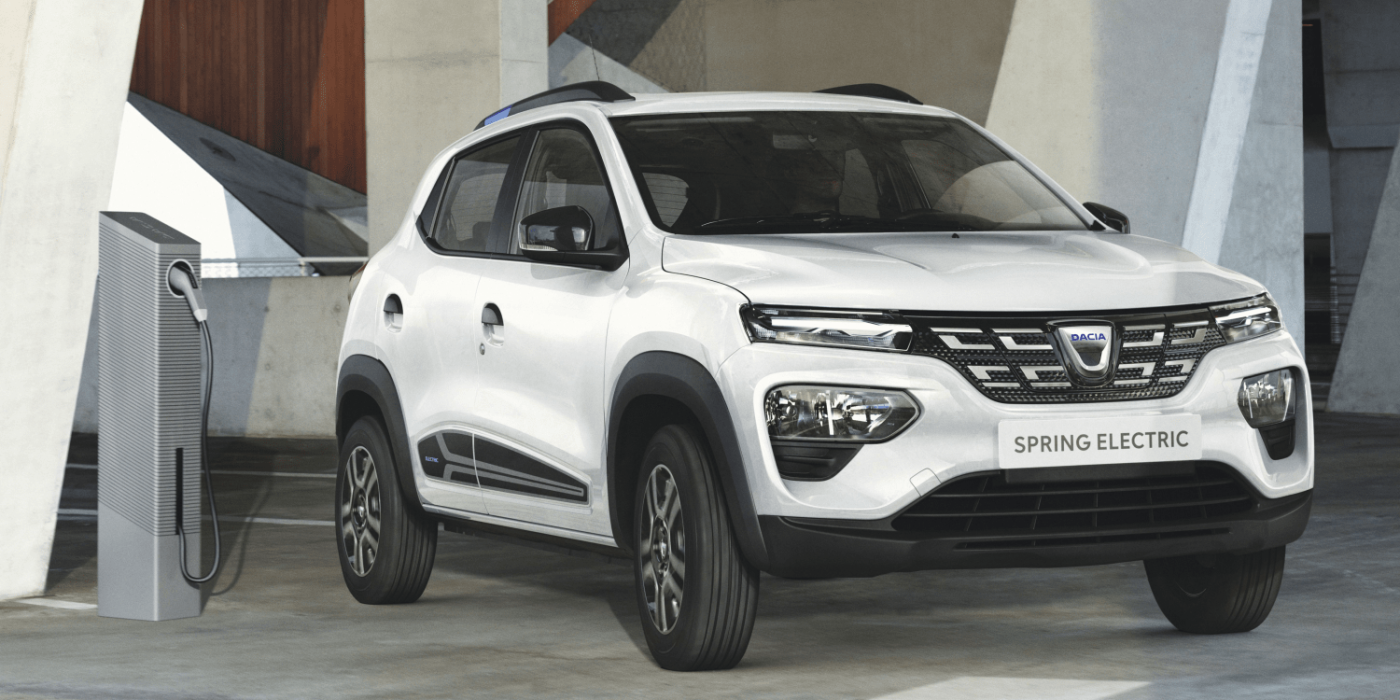
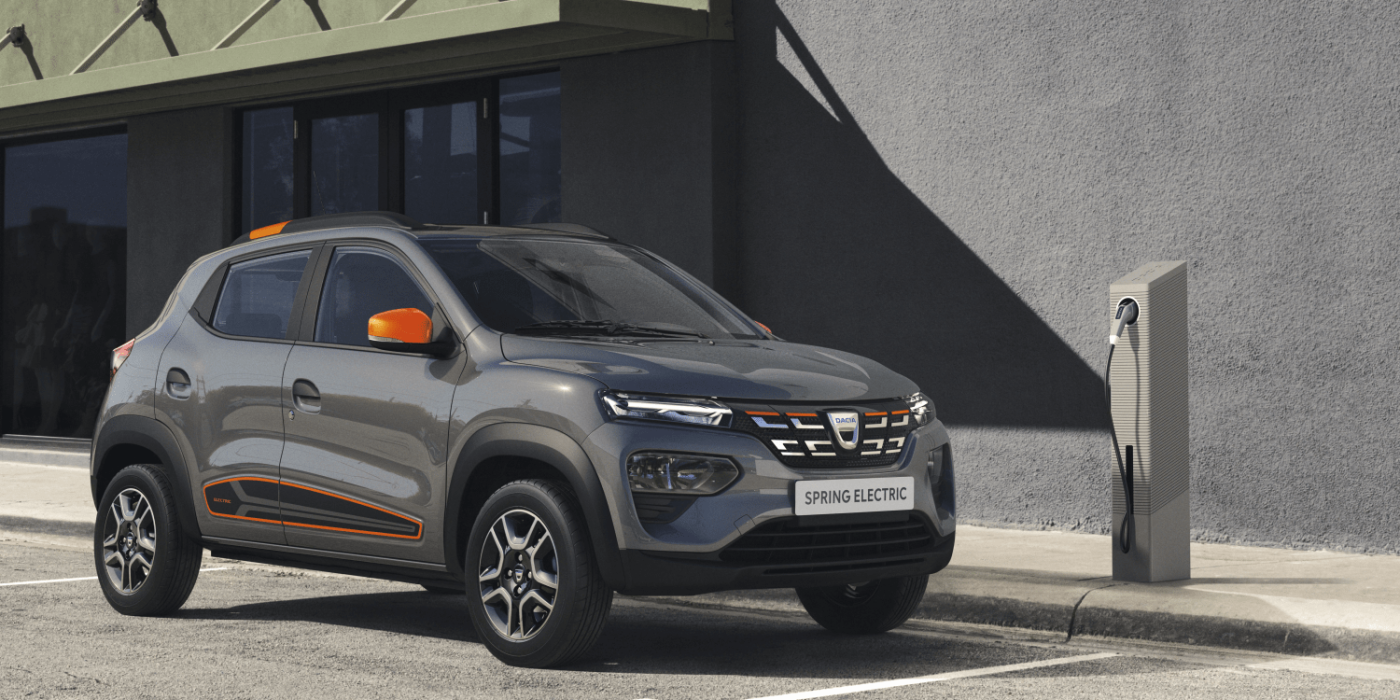
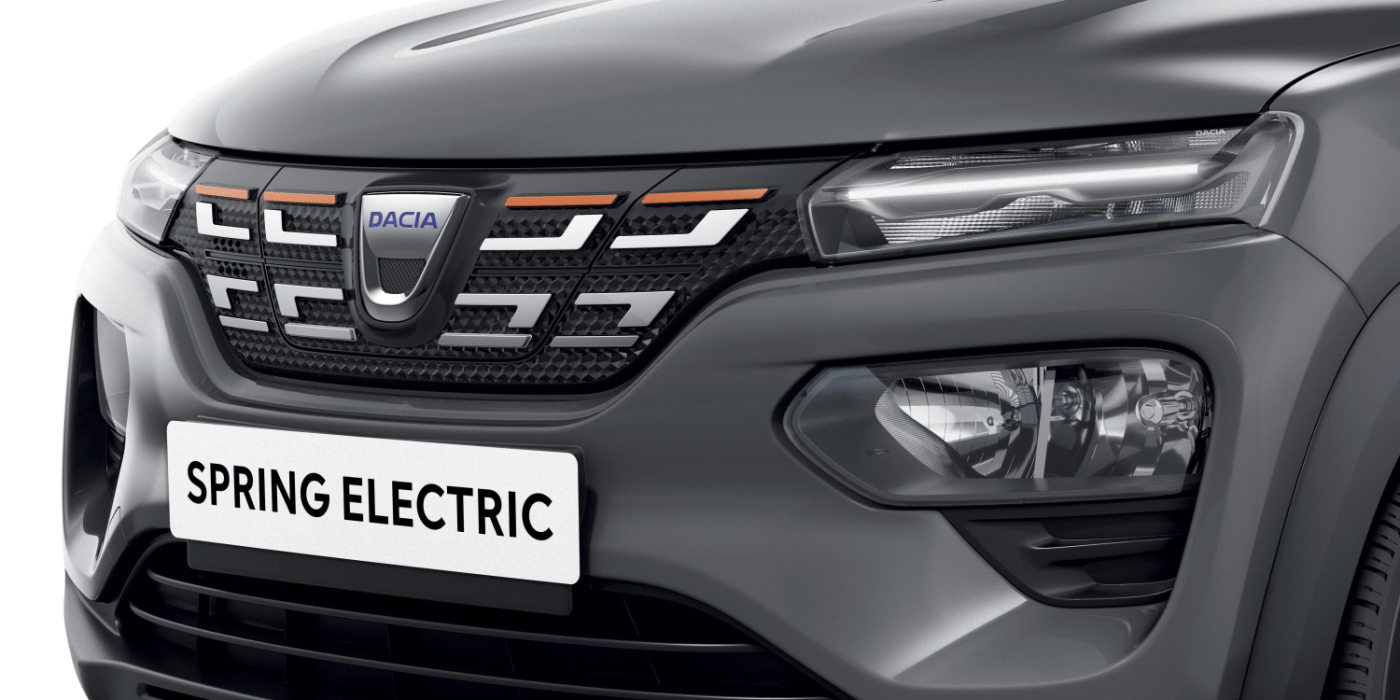
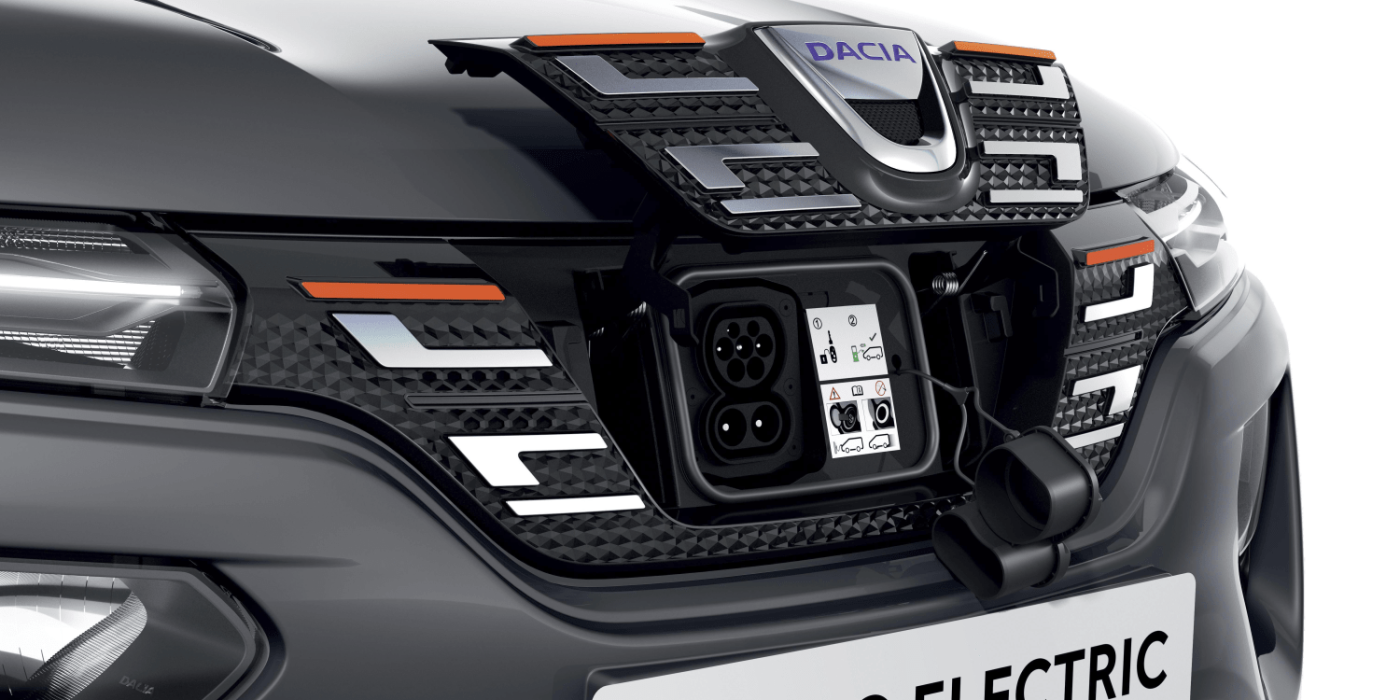
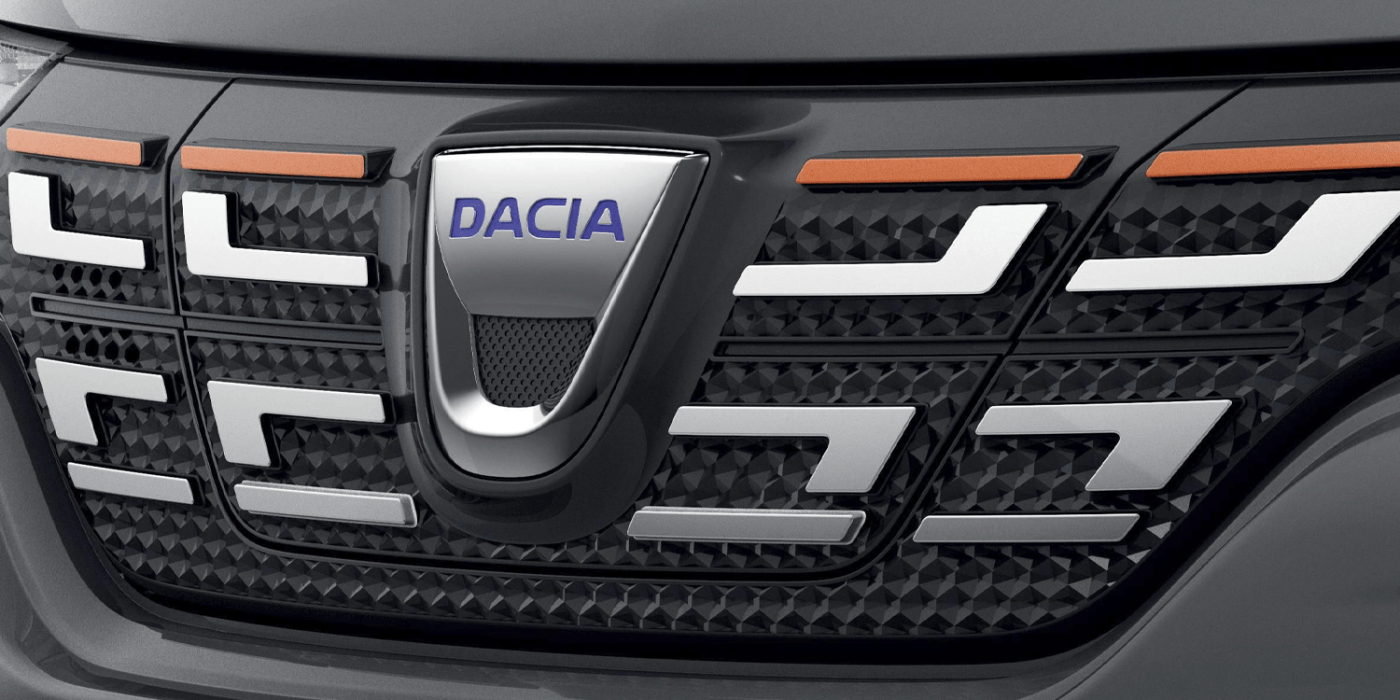
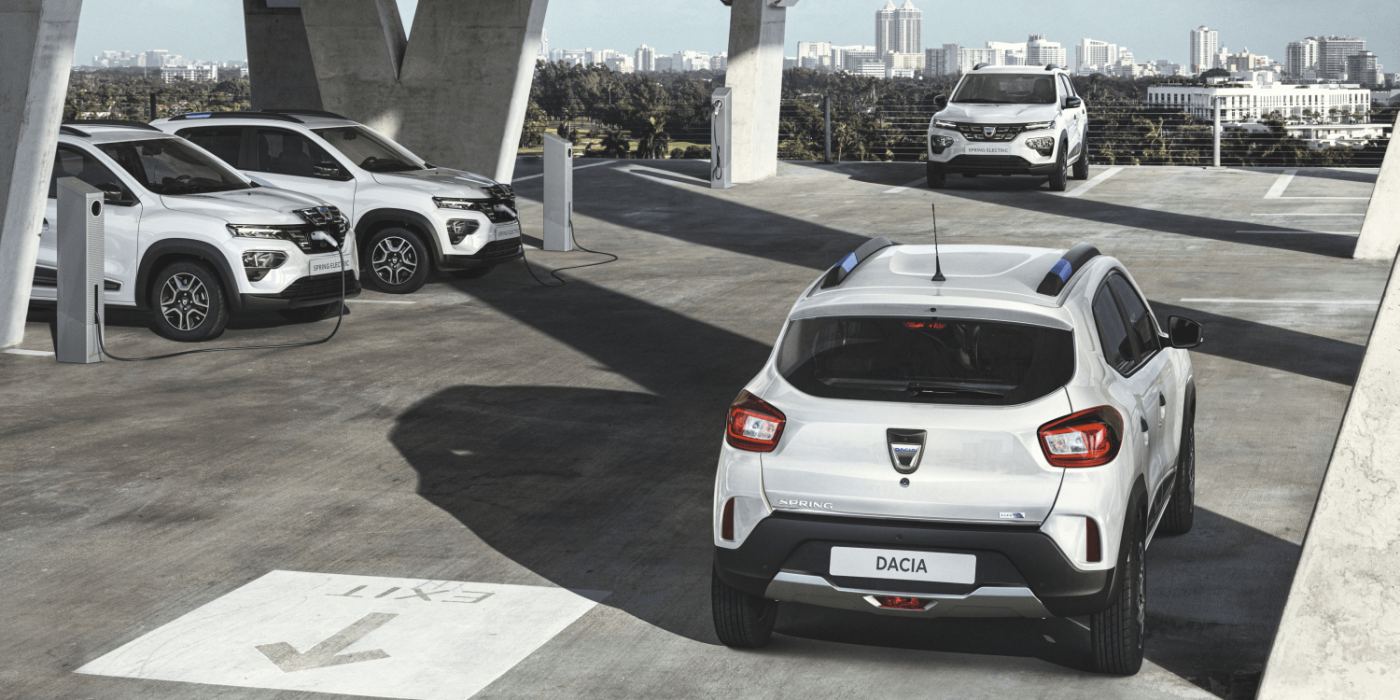
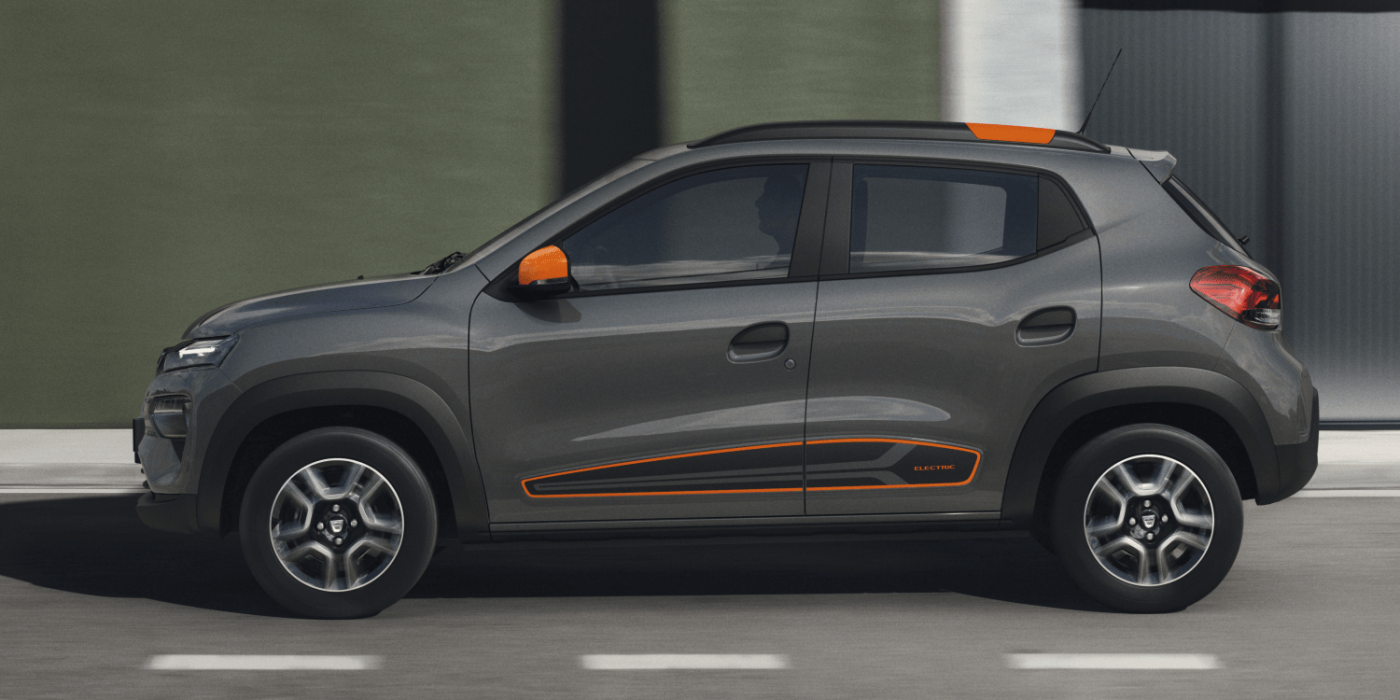
The Dacia Spring retains the Renault data with an electric motor output of 33 kW and a battery of 26.8 kWh. The model, esp. in car-sharing, should help Dacia to quickly reach high volumes of the electric car to avoid CO2 penalty payments to the EU. The brand’s previous concept of using proven Renault-Nissan technologies (which have been written off in the development costs) and thus offering its vehicles at a low price is reaching its limits when it comes to CO2 targets. These are hardly possible without electric cars.
For Renault, the image is a bit more ambitious than catching up. Already the company has achieved its CAFE targets this year, also thanks to the relatively wide offer of electric vehicles. CEO de Meo also pointed out that “batteries are just starting to come back in quantities” after Renault has been selling EVs for over ten years, many with battery leasing in the early days. A second-use pilot is running on the island of Porto Santo, and other places as reported. De Meo also pointed to a plant in Tangier that was working with zero-emissions already. This was in context with a new climate target.
At the event, CEO de Meo set Renault the goal of carbon-neutrality. Renault strives to have zero CO2 impact by 2050 in Europe and to reduce emissions by 50% across operations by 2030.
In line with the announcement, news also reached us about Renault opening up its CO2 pool. The car manufacturer has notified the EU Commission as it has “confidence” that it will achieve its CO2 targets for 2020, as was confirmed by CEO de Meo today.
Also a recent evaluation by Transport & Environment (T&E) showed, Renault was only two grams away from its CO2 target already in the first half of the year. Again this was thanks to Zoe sales that alone were said to have reduced Renault’s fleet emissions by 15 grams in the first half of 2020, according to the report.
T&E also identified Daimler being still nine grams away from its CO2 target. They could be a potential pool partner for Renault. The same goes for Ford since the company is experiencing technical problems with the Kuga PHEV. The upcoming recall means the carmaker will not be able to reach its CO2 fleet targets for passenger cars this year on its own.
Reporting from the virtual live event.

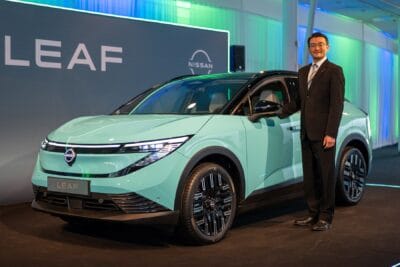
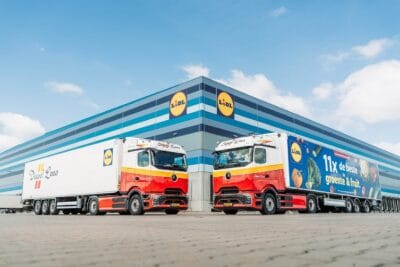
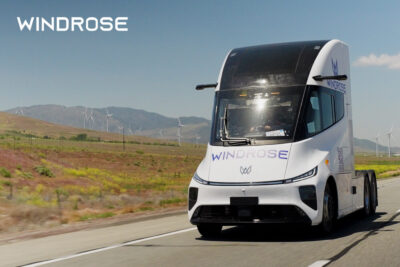
0 Comments